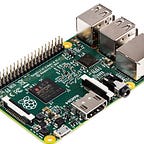In today’s fast-paced technological landscape, server-side JavaScript, particularly Node.js, has revolutionized web development by offering an efficient, scalable, and fast environment for building robust web applications. This article delves into the optimal ways to utilize Node.js, leveraging its powerful features to enhance your development workflow.
Introduction to Node.js
Node.js is a server-side platform built on Google Chrome’s V8 JavaScript engine. It allows developers to use JavaScript to write server-side code, which traditionally belonged to languages like PHP, Java, and Ruby. Node.js is designed to build scalable network applications by providing an event-driven, non-blocking (asynchronous) I/O model.
Asynchronous Programming
One of the standout features of Node.js is its asynchronous programming capabilities. By utilizing non-blocking I/O operations, it can handle thousands of concurrent connections without requiring a large number of threads. This is particularly beneficial for applications that require high levels of performance and scalability, such as real-time applications.
Event-Driven Architecture
Node.js operates on an event-driven architecture, which means that the flow of the program is determined by events such as user actions or messages from other programs. This makes it ideal for real-time applications such as chat applications…
